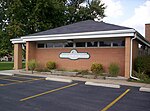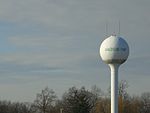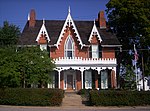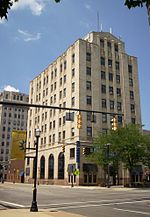Mansfield Correctional Institution
Mansfield Correctional Institution (MANCI) is an Ohio Department of Rehabilitation and Correction mixed-security state prison for men, located at 1150 North Main Street in Mansfield, Ohio, adjacent to the property of the historic Ohio State Reformatory. Ohio's Richland Correctional Institution is also located in Mansfield. The facility opened in 1990 and has a capacity of 2,523 inmates. In 2005 the state's death row inmates were transferred from Mansfield to the Ohio State Penitentiary in Youngstown, Ohio. Those inmates have since been moved to Chillicothe Correctional Institution. In July 2013 prisoner James David Myers engineered an escape, using three ladders to scale security fences. He was caught the next day. Four correctional employees were fired in relation to the escape, for infractions ranging from falsifying inventory documents to failing to respond to fence alarms.
Excerpt from the Wikipedia article Mansfield Correctional Institution (License: CC BY-SA 3.0, Authors).Mansfield Correctional Institution
North Main Street, Mansfield
Geographical coordinates (GPS) Address Phone number Website External links Nearby Places Show on map
Geographical coordinates (GPS)
| Latitude | Longitude |
|---|---|
| N 40.79185 ° | E -82.50908 ° |
Address
Mansfield Correctional Institution
North Main Street 1150
44901 Mansfield
Ohio, United States
Open on Google Maps








